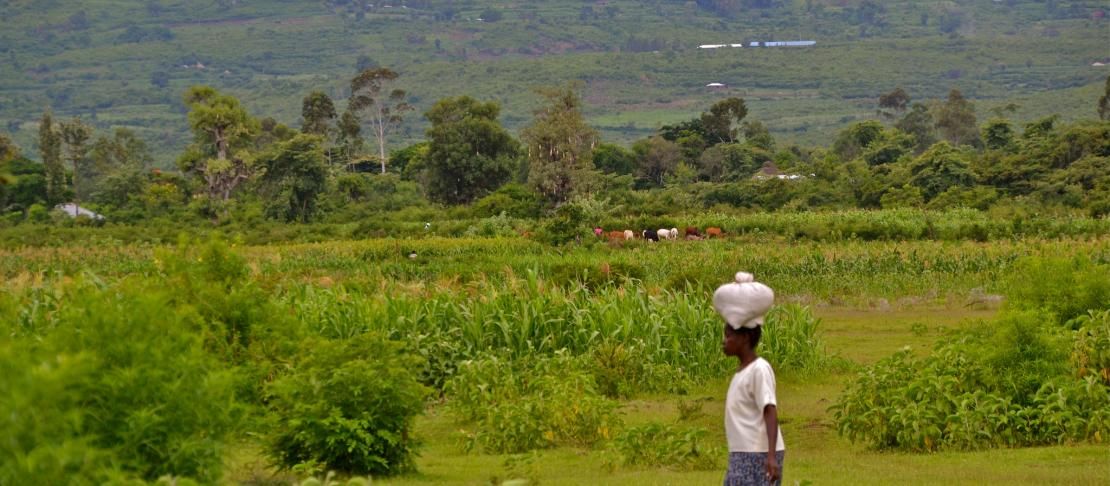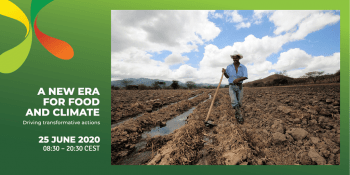Building the base for climate-smart agriculture: Learning from national examples

Initiatives from Brazil, Ethiopia and New Zealand offer insights for policy makers.
Members of the newly launched Global Alliance for Climate-Smart Agriculture met officially for the first time last week. One of the Alliance’s leading strategies is to promote integration of climate-smart agriculture (CSA) into national policies. But what does it mean for CSA to become embedded in a country’s policy framework?
By looking at the policy mix in three countries – Brazil, Ethiopia, and New Zealand – an article published last week in Agriculture & Food Security journal offers some answers.
With different biophysical and socio-economic conditions, these three countries are pursuing agricultural development that enhances crop and livestock productivity rather than agricultural expansion. Brazil has invested in research to support sustainable intensification while creating legal and enforcement mechanisms to protect forest areas. Ethiopia has initiated innovative participatory watershed development programs, which helped smallholder farmers to rehabilitate marginal land and break out of a poverty cycle. New Zealand has removed agricultural subsidies while partnering on research and development (R&D) with the private sector as a pathway to an efficient and resilient agricultural sector.
The article proposes four major categories of technical and institutional investments that governments will need to make in pursuit of CSA. The first of these is context-specific assessments that provide decision-relevant information about how to prioritize actions and investments. In many cases, this will involve estimating the costs and benefits – and beneficiaries – under current and CSA policy regimes. In some cases, this will also include assessment of barriers to scaling up CSA approaches (e.g., weak information or legal systems) and policy levers that can empower key social groups to take action (e.g., micro-lending to women or land tenure shifts).
The second major category of CSA policy action is coordination frameworks that help government, producers, agribusinesses, NGOs, international partners, and others to work toward common targets. By establishing strategic frameworks, national governments can encourage different agencies and private and civic sector actors to design financial and market-based mechanisms, as well as technical assistance programs, toward similar priorities. Finally, national CSA policy action will also require supportive institutions as well as information systems capable of meeting high knowledge requirements for R&D, advisory services, information technologies, M&E, and so on.
Some examples from Ethiopia illustrate how these four categories play out in practice.
- A study undertaken by the Global Green Growth Institute (GGGI) and Ethiopian Development Research Institute (EDRI) estimated the climate change mitigation potential of major economic sectors, relative to business-as-usual, by 2030. This study concluded that forestry initiatives, including afforestation and reforestation as well as efficient fuelwood stoves, represent ~45% of mitigation potential. Another 25% of estimated mitigation potential was associated with improved soil and livestock management.
- In 2011, supported by the assessment of sectoral mitigation potential, Ethiopian policy makers established the Climate-Resilient Green Economy (CRGE) Strategy to marshal national and international resources toward low-carbon development anchored in sustainable agricultural intensification. The CRGE prioritizes 60 green growth initiatives that were screened for feasibility, mitigation potential, and cost-effectiveness. The Strategy has a ‘whole of government’ structure designed to align the activities of different ministries.
- Launched in 2005, the Productive Safety Net Program has provided cash and in-kind transfers to 8 million chronically food-insecure Ethiopians, most of who contribute to public works projects in exchange. In a 2012 evaluation, Béné et al found that “households that have benefited from PSNP transfers systematically display higher food security than non-beneficiaries.”
- To meet its objectives for increasing agricultural productivity, the Ethiopian Soil Information System (EthioSIS) was initiated in 2011. A National Soils Database and soil fertility map of Ethiopia is being developed to determine soil nutrient deficiencies and to develop tailored fertilization regimes. To address high dependence on imported fertilizers, the Ethiopian government is establishing eight fertilizer production plants and four fertilizer blending plants. Notably, the agriculture ministry is convening a team of experts and partners to strategize an improved system for tracking changes in land degradation, as estimates still in current use are now decades old.
To advance climate-smart agriculture, governments can select from an array of policy instruments ranging from regulatory mechanisms and economic incentives to public investments and educational campaigns. Many existing national policy goals and public programs designed to increase agricultural production, improve livelihoods, and reduce environmental risks can become important pillars of a national CSA strategy.
Read the related CCAFS report: Integrated National Policy Approaches to Climate-Smart Agriculture
Sources:
- ATA. 2014. Annual Report: Transforming Agriculture in Ethiopia. Addis Ababa: Ethiopian Agricultural Transformation Agency (ATA).
- Christophe Béné, Stephen Devereux and Rachel Sabates-Wheeler. 2012. Shocks and Social Protection in the Horn of Africa: Analysis from the Productive Safety Net Programme in Ethiopia. IDS Working Paper, Volume 2012 Number 395. Brighton, UK: Institute of Development Studies.
- FDRE. 2011. Ethiopia’s Climate Resilient Green Economy (CRGE) Strategy. Addis Ababa: Federal Democratic Republic of Ethiopia. Available at: http://www.epa.gov.et/Download/Climate/Ethiopia's%20Climate-Resilient%20Green%20economy%20strategy.pdf
Dr. Christine Negra coordinated the Commission on Sustainable Agriculture and Climate Change.



